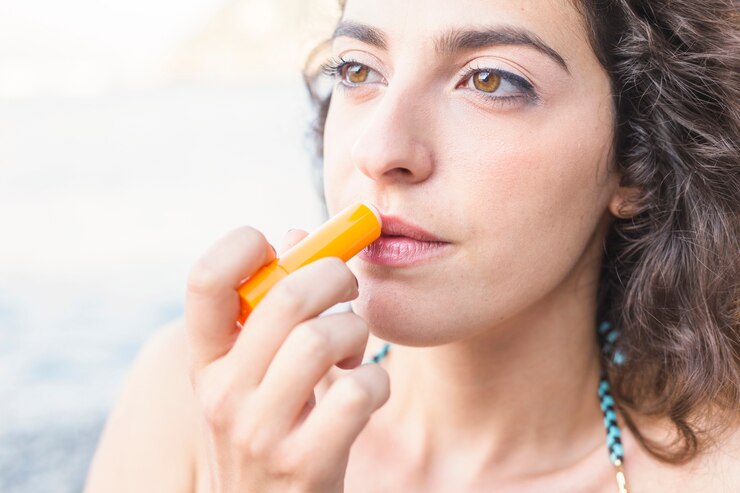News
Difference Between Serum vs. Moisturizer
The blog explains the difference between serums and moisturizers, highlighting their distinct roles and benefits in skincare. Serums have a lightweight texture and contain a high concentration of active ingredients like Vitamin C and retinol, targeting specific concerns such as wrinkles and acne. In contrast, moisturizers are thicker and provide hydration by creating a protective barrier to lock in moisture.
Learn moreBenefits of Using Vitamin C Serum for Your Skin
The transformative benefits of Vitamin C serum for your skin. This blog post covers how Vitamin C brightens, reduces fine lines, protects against environmental damage, and boosts collagen production. Learn about different forms of Vitamin C, when to apply it, how to choose the right serum for your skin type, and tips on incorporating it into your skincare routine. Ideal for all skin types, Vitamin C serum delivers radiant, youthful skin.
Learn moreHow to Fix Damaged Skin Barrier on the Face
A healthy skin barrier is essential for protecting against external aggressors and retaining moisture. When compromised, it can lead to irritation, dryness, and sensitivity. To repair a damaged barrier, follow a gentle skincare routine with mild cleansers, barrier-repairing moisturizers containing ceramides and hyaluronic acid, and avoid harsh ingredients like alcohol or sulfates. Seek professional help if necessary and consider lifestyle changes to support skin health. By maintaining a strong skin barrier, you can prevent long-term skin issues and keep your skin resilient and radiant.
Learn moreYou Should Know Niacinamide Benefits for Skin
Niacinamide, also known as vitamin B3, is a versatile skincare ingredient with numerous benefits for all skin types. It helps hydrate the skin by enhancing its barrier function, reduces inflammation, and tightens pores by regulating sebum production. Niacinamide also brightens the complexion, evens out skin tone, and reduces dark spots by inhibiting melanin production. Additionally, it combats visible signs of aging by boosting collagen production and shields the skin from sun damage with its antioxidant properties. Suitable for oily, dry, sensitive, and combination skin, niacinamide is a valuable addition to any skincare routine for healthier, more radiant skin.
Learn moreKorean Skincare Routine Order Morning and Night
The blog explores the Korean skincare routine for both morning and night, emphasizing the importance of each step. It begins by explaining the philosophy behind Korean skincare, focusing on prevention, natural ingredients, and achieving glass skin. The morning routine includes cleansing, toning, applying essences, serums, eye creams, moisturizers, and SPF for protection. The nighttime routine also involves cleansing, toning, using essences, serums, eye creams, and heavier moisturizers or oils for deep nourishment. Tips for achieving glass skin and addressing common FAQs are provided, offering a comprehensive guide to maintaining healthy, glowing skin through consistent skincare practices.
Learn moreHow Long Does It Take Kojic Acid to Lighten Skin?
Kojic acid is a popular skincare ingredient used to lighten skin and reduce dark spots, uneven tone, and melasma. Derived from fungi, it inhibits melanin production by blocking the enzyme tyrosinase. Results can be seen in 2-4 weeks with regular use, but significant changes may take 2-3 months. Daily use is safe, though starting slowly is recommended. Consistent application is necessary to maintain results, as stopping may cause skin to darken again. Kojic acid also offers anti-aging, antioxidant, and antimicrobial benefits. Always use sunscreen and combine kojic acid with other skincare products for optimal results.
Learn moreWhat Should We Apply First Sunscreen or Moisturizer?
Navigating skincare routines can be confusing, particularly when deciding whether to apply sunscreen or moisturizer first. This blog clarifies that sunscreen should be the last step to effectively protect against UV rays. It explains the differences between chemical and physical sunscreens, emphasizes the importance of both sunscreen and moisturizer, and provides application tips. It also covers why mixing the two is not advisable, the necessity of reapplication, and how to layer makeup over sunscreen. Additionally, the blog highlights top sunscreen and moisturizer products, stressing the importance of using both for optimal skin health and protection.
Learn moreHow Can Remove Pigmentation On Face?
Facial pigmentation, including dark spots and uneven skin tone, can affect confidence and appearance. This blog explores the causes, types, and treatments for pigmentation. Causes include sun exposure, hormonal changes, genetics, aging, and skin injuries. Types include melasma, sunspots, post-inflammatory hyperpigmentation, and freckles. Effective treatments include hyperpigmentation creams like Melakey, milky cleansers like Facebath, hyaluronic acid serums like C-Sum, and under-eye creams like Elysium. Prevention strategies involve daily sunscreen use, protective clothing, and a balanced diet. Consistent skincare routines with targeted products are essential for reducing pigmentation and achieving a clearer, more even complexion.
Learn moreIs Kojic Acid Safe For Skin?
Kojic acid is a naturally occurring ingredient used in skincare for lightening dark spots and evening skin tone. It works by reducing melanin production, the pigment that gives skin its color. Kojic acid is generally safe for many skin types, but it can cause irritation. To minimize risks, do a patch test before using it regularly and consult a dermatologist if you have sensitive skin. While kojic acid is effective, it may take weeks to see results. There are also other safe and effective brightening ingredients available, such as vitamin C and tranexamic acid. If you are considering using kojic acid, talk to your dermatologist to find the best option for your skin.
Learn more










